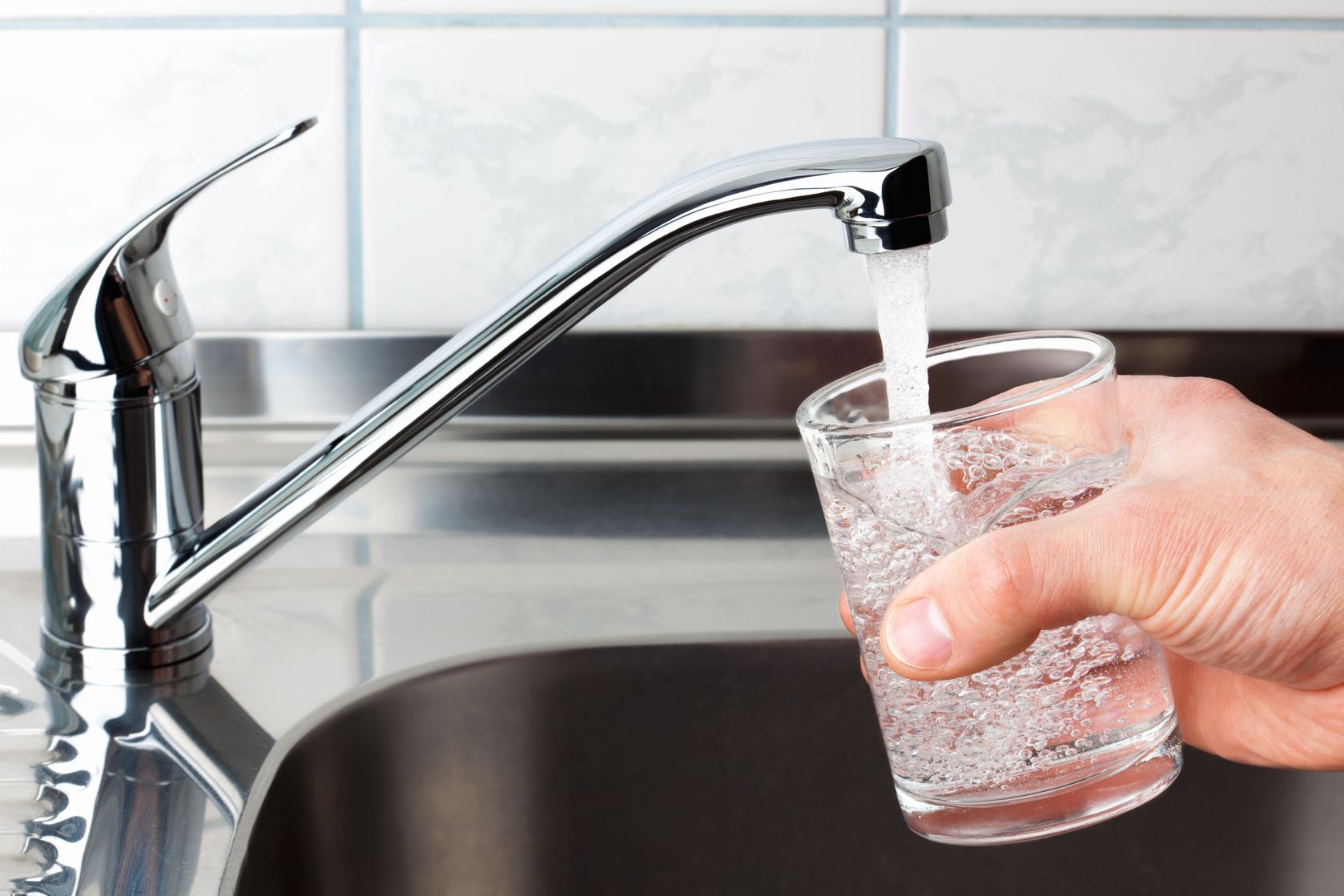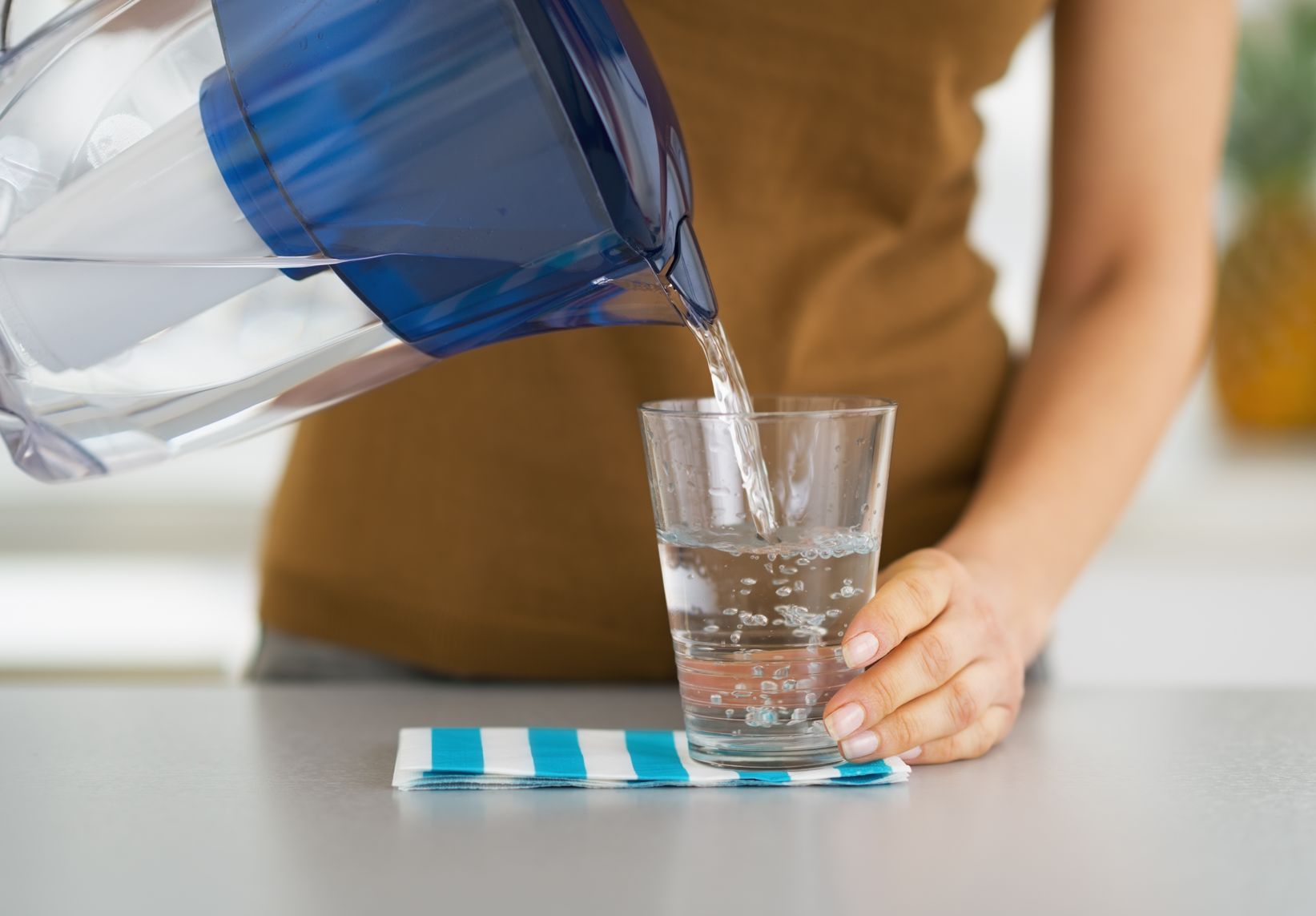It’s 100 degrees in the shade, and you’ve just come in from walking the dogs. Do you grab a bottled water from the fridge or a glass from the cabinet and fill up from the faucet? Is there such a thing as the ‘healthiest water’?
We’ll examine these questions and more…
Regulating Water
Water is regulated in the U.S. by a few different agencies, each with a different mission. While the U.S. Environmental Protection Agency keeps a close eye on the water that comes from the tap, the U.S. Food and Drug Administration looks out for safety and truthful labeling of bottled water water.
Both agencies have their work cut out for them. Environmental pollutants are seemingly everywhere, and they may also be lurking in your water. These may include pathogenic microbiota, heavy metals, industrial chemicals, and even known toxins not closely regulated by U.S. governmental agencies.
And don’t think that the water you’re drinking from a bottle is any safer. In many cases, bottled water might be more harmful to your health. You see, in many cities, tap water must be filtered, and tested for bacteria and viruses. But government regulations don’t require the same rigorous testing of bottled water manufacturers.
So … which is safer?
Each state and city has different regulations on tap water; you may want to check reports from your city government to find out what’s in your water. These annual reports can help you to determine whether the drinking water in your area is safe. But what about bottled water? Let’s take a closer look at both tap and bottled waters …

Bottled Water Basics
Whether it is spring sourced, distilled, mineral, or sparkling, one thing is for certain: Water packaged in plastic bottles is something to avoid – at all costs. In addition to the tremendous environmental impact of discarding millions of non-biodegradable plastic bottles into landfills, bottled water that comes in plastic also poses a slew of potential health risks.
It’s not that the water itself is bad for you. It’s that the plastic that contains it could be more harmful than the water coming out of your tap. A recent study published in the journal Food Chemistry confirmed that drinking or storing water inside plastic bottles can cause toxic chemicals to seep into the water, and ultimately, into your bloodstream. The study reported these chemicals include phthalates, diethylhexyl adipate, alkylphenols, and bisphenol A.1
You may have already heard about toxic industrial chemicals found in some food containers, like canned foods. One of the most common, known as bisphenol A, or BPA, can also be found in plastic bottles. This chemical, used as a hardening agent in the production of plastic, has remained on the shelves since the 1960s. And, since its introduction into the food packaging industry, some studies suggest BPA can be found lurking in our bodies. In the early 2000s, the Centers for Disease Control and Prevention (CDC) revealed that detectable levels of BPA were found in 93 percent of the over 2500 urine samples of people ages six and older.2
Why is this so alarming? This hormone disrupting chemical has potential links to brain and heart problems, obesity, and diabetes – and it is especially disruptive to young children.3,4
Plastic is photodegradable, meaning it can decompose when exposed to light, particularly sunlight. Because of this, any extra heat or light exposure may cause a water bottle’s constituents to leach into its contents. In addition, It is virtually impossible to know where the bottles have been before they hit the shelves, as well as how much exposure they have had to environmental elements. It is also common for water to be added into the plastic bottle immediately after the bottle is formed – allowing little to no time for the plastic to cure. While this is an efficient manufacturing process, it neglects the fact that at such a hot temperature, the byproducts of plastic may be delivered into the water at its inception.
When shopping for a bottled water, always aim to purchase a BPA-free plastic variety. You can also purchase water in a glass bottle to avoid these potentially harmful health effects.

Terrible Tap Water
Tap water contamination is a growing concern. In one 2016 study on the quality of tap water, scientists found that supplies for 6 million U.S. residents exceed the U.S. Environmental Protection Agencies lifetime health advisory for poly- and perfluoroalkyl substances, or PFASs. If these substances sound scary, it’s because they are. Studies have shown that these industrial chemicals have seeped into water supplies from military fire training areas, industrial sites, and wastewater treatment plants in some cities. The study concluded that tap water PFAS contamination poses risks to the developmental, immune, metabolic, and endocrine health of consumers.5
Chlorine is also commonly used in city water systems to improve the odor and color of the end product that comes out of your tap. Unfortunately, this chemical is a major acid producer in the body – one which has the potential to damage our cells on contact and harm balanced pH. Chlorine is also known to interact with organic compounds in the body, leading to the development of trihalomethanes – environmental pollutants which can destroy healthy cell tissue.6
Fluoride: Is it Good or Bad?
Fluoride is another chemical commonly added into tap water to improve water quality, but it too may pose health risks when consumed over time. Studies have shown that fluoride toxicity is linked to a variety of different health problems, including brittle teeth, cognitive impairment, hypothyroidism, dental and skeletal fluorosis, and enzyme and electrolyte imbalances.7
The steam distillation process kills bacteria by boiling water, allowing the steam to collect in a glass container. It is a water filtration method known to remove all fluoride and chlorine from water. Other processes, such as reverse osmosis, are also effective in cleaning tap water from your household water supply for drinking and bathing.
Steamed distillation is one of the best ways to clean up the water in your home, making it suitable for drinking. The goal of this process is to reduce the number of total dissolved solids (TDS) in the water as much as possible. Total dissolved solids include all inorganic and organic substances contained in a liquid. Although bottled water tends to be lower on the TDS scale, it is still possible to reduce potential pollutants in tap water even lower than bottled water by using a distiller with an activated charcoal filter.

A Final Note on Choosing the Healthiest Water
No matter what type of water you choose, having a high-quality water filter is always a good idea. There are many options, including tap filters you can put right on your faucet, steam distillers, water bottle drop-in filters, and even activated charcoal sticks you can drop into any glass (even at restaurants) that also remove heavy metals and other contaminants.
This all may sound pretty scary, but not to worry. There are a few steps to ensure you and your family have the healthiest water:
1. Pick up a pitcher with a quality water filter from your local grocery store.
OR
2. Install a water filter in your house.
OR
3. Subscribe to a monthly water delivery service — just make sure the water comes from a natural source, such as spring. Otherwise, you’ll be spending a lot of money on filtered water…something you can do at home by following suggestion #1.
After all, it’s worth the effort to choose the healthiest water possible—it is one of the most vital nutrients your body needs for good health, and longevity. Drink up!
1. Albert Guart, Francisco Bono-Blay. Effect of bottling and storage on the migration of plastic constituents in Spanish bottled waters. Food Chemistry 2014 August 1, 156: 73-80.
2. Bisphenol A (BPA). National Institute of Environmental Health Services. National Institutes of Health. U.S. Department of Health and Human Services.
3. Rubin BS. Bisphenol A: an endocrine disruptor with widespread exposure and multiple effects. J Steroid Biochem Mol Biol. 2011 Oct;127(1-2):27-34. doi: 10.1016/j.jsbmb.2011.05.002. Epub 2011 May 13.
4. Fanny Rancière, Jasmine G. Lyons. Bisphenol A and the risk of cardiometabolic disorders: a systematic review with meta-analysis of the epidemiological evidence. Environ Health. 2015; 14: 46. 2015 May 31.
5. Detection of Poly- and Perfluoroalkyl Substances (PFASs) in U.S. Drinking Water Linked to Industrial Sites, Military Fire Training Areas, and Wastewater Treatment Plants.
6. Xindi C. Hu, David Q. Andrews. Chlorine in Drinking Water. Background document for development of WHO Guidelines for Drinking Water Quality. Environ. Sci. Technol. Lett., 2016, 3 (10), pp 344–350.
7. Stephen Peckham, Niyi Awofeso. Water Fluoridation: A Critical Review of the Physiological Effects of Ingested Fluoride as a Public Health Intervention. The Scientific World Journal. Volume 2014 (2014), Article ID 293019, 10 pages.

Thanks for this wondrous post, I am glad I discovered this web site on yahoo.
I’m really impressed with your writing skills as well as with the layout
on your weblog. Is this a paid theme or did you customize it yourself?
Either way keep up the excellent quality writing, it is rare to see a nice blog like this one nowadays.
asmr 0mniartist
Wow! At last I got a web site from where
I be capable of really obtain valuable facts regarding my study and knowledge.
0mniartist asmr
Paragraph writing is also a fun, if you be familiar
with afterward you can write if not it is complicated to write.
asmr 0mniartist
The subsequent time I learn a weblog, I hope that it doesnt disappoint me as much as this one. I imply, I know it was my choice to read, but I really thought youd have one thing fascinating to say. All I hear is a bunch of whining about one thing that you would fix if you werent too busy looking for attention.
It’s not my first time to pay a quick visit this web site, i
am browsing this web page dailly and obtain good data from here
daily. 0mniartist asmr
My hands are weak and painful so I hoped jar opener would help me open jars. I have had difficulty stabilising the jar and the grip around the lid kept slipping.